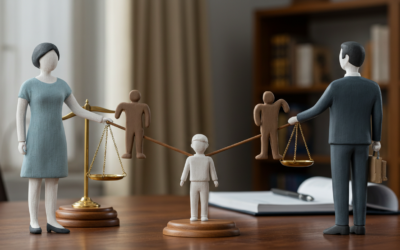Car accidents are something nobody wants to experience, but unfortunately, they happen often. Even the best, most defensive drivers can be involved in a car accident due to another driver’s negligence. It’s easy to point the finger and accuse someone of being at fault, but who is truly liable for a car accident in Wisconsin?
In this blog post, we will explore the concept of shared fault following a car accident to better understand Wisconsin laws surrounding liability. Read on to understand your rights and the compensation you may be entitled to if you are involved in a car accident.
No-Fault Vs. Shared Fault
First, you should understand the concept of shared fault in Wisconsin. It helps to compare this to the ‘no-fault’ system established in many other states.
No-Fault
Under a no-fault system, each driver’s insurance company pays for their own damages and injuries regardless of who was at fault for the accident. That means drivers don’t have to fight for compensation or prove fault. States that have adopted this system hope it will reduce the number of lawsuits and speed up compensation. They include New York, Massachusetts, Florida, and Michigan.
Shared Fault
Share fault is a system sometimes called ‘comparative negligence.’ In the event of a car accident, the fault is shared between both parties, and compensation is based on this split. For example, if you are 20% at fault for an accident, then any compensation will be reduced by 20%. As such, seeking $10,000 in compensation might result in settlement of $8,000.
Some argue that the shared fault system is fairer than the no-fault, as it allows both parties to share responsibility and encourages people to drive more carefully. It also means that if you are injured in an accident caused by another driver, you can seek compensation based on the degree of fault assigned.
Wisconsin uses a modified version of the shared fault system called “modified comparative negligence.” In this system, if you are found to be more than 50% at fault, you cannot receive any compensation. It prevents people who are significantly responsible for an accident from seeking large payouts.
Contributory negligence
A few states also have a ‘contributory negligence’ system. This means that if you are even 1% at fault for an accident, then you cannot claim any compensation, regardless of the degree to which someone else was at fault. This system makes it difficult to seek compensation if you are injured in an accident or responsible for causing it.
How Does Proving Fault Work?
To prove fault in an accident, a party must prove the other driver’s negligence. Negligence is when a person fails to act in a way that any reasonable person would in the same situation. For example, if someone drives aggressively and causes an accident, they are negligent, as it is not what a reasonable person would do.
Note that negligence isn’t limited to driving behavior; it could include any action that leads to an accident. Forgetting to check the oil level in your car could be considered negligence if it results in an accident.
However, it doesn’t stop there. It isn’t enough to hold someone liable to prove they were negligent; you must also prove that you were not negligent. Let’s look at another example: A driver in a rush decides to run a stop sign in a residential neighborhood and hits your car. In this case, the driver who ran the stop is obviously negligent, but you must also prove that you at least tried to avoid the accident by braking or otherwise taking evasive action.
In other words, you can’t simply take advantage of someone else’s mistake.
How Can A Wisconsin Car Accident Lawyer Help?
As you can see, proving fault can be complicated, and it is essential to have a good understanding of the law. That’s why it’s always best to seek the advice of an experienced car accident lawyer if you are involved in an accident. They will be able to explain your rights and advise you on who is liable for the accident and what kind of compensation you may be entitled to.
Your lawyer can:
Gather evidence to prove fault
In order to prove negligence, your lawyer can gather evidence such as witness statements, CCTV footage, and photos of the accident scene. These can all be used to prove that the other person was negligent and you were not. Having such evidence is crucial because the opposing party may try to prove that you were at least partially responsible for the accident.
Negotiate a favorable settlement
Your lawyer can also analyze the evidence to calculate precisely how much fault lies with each party, so you know what kind of compensation you should be entitled to. They will try to minimize your share of the blame and negotiate a favorable settlement with the other party’s insurance company.
Insurance companies are notorious for trying to minimize the amount they have to pay out, so it’s best to have a lawyer on your side who knows the law and can fight for you.
Show up in court to represent you
If negotiations fail and the case goes to court, your lawyer can represent you before a judge and jury. They can explain your situation clearly and prove why you are entitled to compensation. Without any courtroom experience, representing yourself may be difficult, and the outcome may not be favorable.
In fact, even if negotiations are successful, having a lawyer by your side can help ensure that the settlement amount is fair and reasonable.
Contact Vanden Heuvel & Dineen, S.C. Today
The statute of limitations for car accident cases in Wisconsin is only three years, so it’s important to act swiftly and seek legal advice. If you have been involved in an accident and need assistance, contact Vanden Heuvel & Dineen, S.C. today. Our experienced car accident lawyers are ready to help you prove fault and get the compensation you deserve.
Don’t wait for justice; get in touch with us now and see how we can help you!




